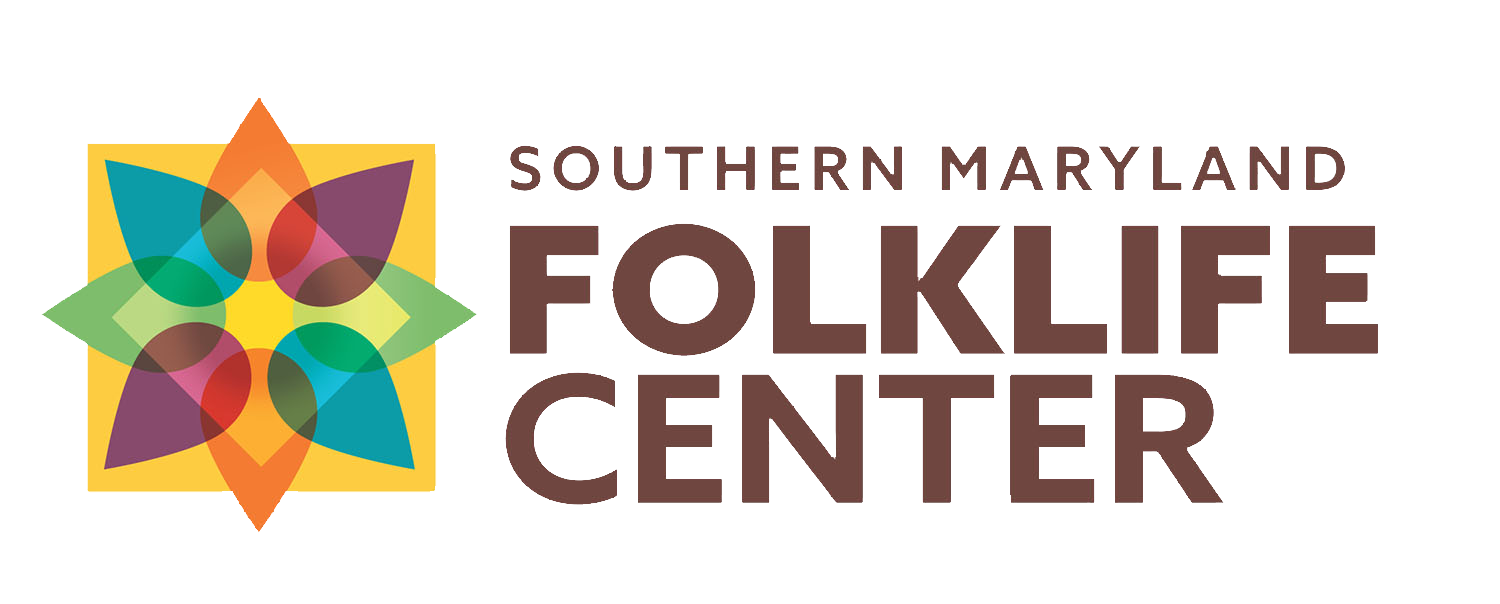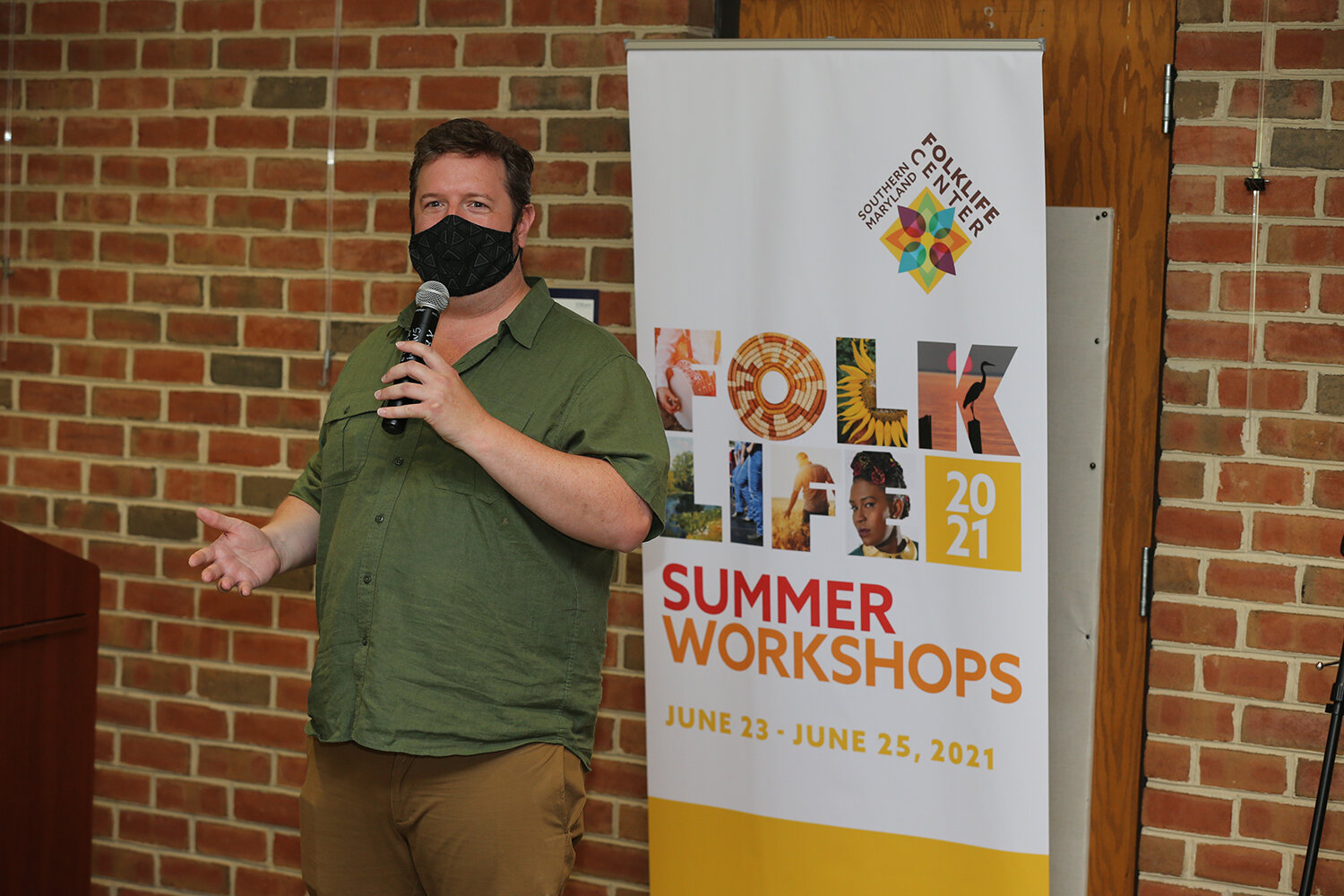
About the Folklife Center
The Southern Maryland Folklife Center celebrates and supports community-based living cultural traditions of Southern Maryland.
The summer workshops will be the backbone of the newly formed center, which is part of the Maryland State Arts Council’s (MSAC) Folklife Network. This summer’s event, which is funded by the MSAC’s “Maryland Traditions” program, builds on several past MSAC Folklife Network grants, through which we have been able to sustain work on Southern Maryland documentation projects, such as digitizing archival content, as well as the creation of Volume VIII of SlackWater: A Journal on Environmental and Cultural Change in Southern Maryland, due out in fall 2021.
The Workshops and The Center have both grown out of a number of past efforts at St. Mary’s College of Maryland, but both owe much to The SlackWater Center, which has, since the mid-1980s, been documenting life in Southern Maryland, especially through the publication SlackWater: A Journal on Environmental and Cultural Change in Southern Maryland.
In coming years, we plan to grow the Center into an organization that works to connect Southern Marylanders with folklife practices–both those endemic to the region and those currently practiced here. The Southern Maryland Folklife Center is creatively co-directed by three faculty members at SMCM, Kent Randell (Library Archivist), Erin Peters (Director of Boyden Gallery), and Jerry Gabriel (Assistant Professor of English).
Our Team
The Southern Maryland Folklife Summer Institute has grown out of a number of efforts at St. Mary’s College of Maryland, but owes much to The SlackWater Center, which has, since the mid-1980s, been documenting life in Southern Maryland, especially through the publication, SlackWater: A Journal on Environmental and Cultural Change in Southern Maryland. The Southern Maryland Folklife Center is currently co-directed by three faculty members at SMCM.
Kent Randell
Kent Randell is college archivist of St. Mary’s College of Maryland. He is also a tenured member of the library’s teaching faculty, recipient of the Aldom-Plansoen distinguished professorship, and teaches an Introduction to Archives course. His scholarly output includes a book chapter about ethnic archives, topics related to his Finnish and Saami heritage, articles in genealogical journals, and the intersection of the archival record and 19th century free and enslaved persons of color in Southern Maryland.
Jerry Gabriel
Jerry Gabriel is Project Director for SlackWater: A Journal of Environmental and Cultural Change in Southern Maryland, and Co-Director of the Chesapeake Writers’ Conference. His first book of fiction, Drowned Boy, won the Mary McCarthy Prize in Short Fiction and was published in 2010 (Sarabande Books). It was a Barnes and Noble “Discover Great New Writers” pick and awarded the 2011 Towson Prize for Literature. His second book, The Let Go, was published in 2015 (Queen’s Ferry Press). His stories have appeared in One Story, Epoch, Fiction, Five Chapters, The Missouri Review, and The Alaska Quarterly Review, among other publications. His work has been short-listed for a Pushcart Prize and he has received grants and fellowships from the New York Foundation for the Arts (2004), the Bread Loaf Writers’ Conference (2011), and the National Endowment for the Arts (2016).
Erin Peters
Dr. Erin Peters is Director of the Boyden Gallery and Fine Art Collection and Lecturer in Museum Studies at St. Mary’s College of Maryland (SMCM). Peters cares for the collection, creates exhibitions and public programming, teaches museum studies courses, and leads work to update the mission and vision of the Gallery and Collection. She believes best practices in diversity, equity, and inclusion are the core of this work by inviting multiple community perspectives and creative voices on campus and in the Gallery. Prior to arriving at SMCM, Peters spearheaded major curatorial projects at the Metropolitan Museum of Art and Carnegie Museum of Natural History, and taught museum studies at the University of Pittsburgh. Her publications have appeared in Egyptian Archaeology, the Journal of Ancient Egyptian Interconnections, and the Metropolitan Museum Journal.

Campus
St. Mary’s College of Maryland is named for the place it marks: the 17th-century capital of Maryland.
A public liberal arts college of 1,300 students, we sit at a spectacular bend of the St. Mary’s River, just upstream from the confluence of the Potomac River and the Chesapeake Bay. The campus is 75 miles southeast of Washington, D.C. and 97 miles south of Baltimore. The campus architecture is styled in the tidewater tradition, largely brick and facing the scenic river. The place has a quiet, pastoral beauty.










